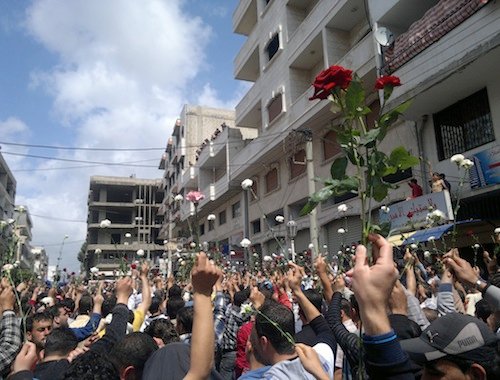A Woman in the Crossfire is, as the subtitle suggests, an account of the Arab Spring-inspired uprisings in Syria; or at least the first few months of them.
This is my book from Syria for the Read The World challenge. Because of the rules I’ve set myself, that the books should be written by people from the countries in question, I often find it frustratingly difficult to find books which are up to date, and which engage with life in those countries as it is now: usually if a book is only twenty years old I’m doing quite well.

This book is certainly up to date. Or at least, as a piece of journalism I suppose it’s already slightly out of date; it covers the period from March to July last year, and the situation in Syria has moved on since then. But it still feels very fresh and raw.
Like A Poet and Bin Laden, this is journalism (in a broad sense) written by a novelist. And although it is much less ‘literary’ in form — it’s written in a pretty straightforward diary form, plus interviews she did with other Syrians — there are certainly bits that don’t quite read like standard journalism. Most obvious is the amount of emphasis on her own emotional and psychological experience. It rubs against the normal assumption of journalism that keeping the journalist out of the story is evidence of objectivity.
But actually, the psychological pressures on a dissident living in a police state which is cracking down violently on protests is a fascinating subject in its own right. The sleeplessness, the panic and uncertainty, the fear that the regime will take revenge, not just on her but on her daughter: this is an important part of the story of what it means to live in a dictatorship. And it makes it all the more admirable that she kept on putting herself in danger by going out to observe protests and conduct interviews; and completely unsurprising that after a few months she chose to leave the country, taking her daughter with her.
At times it starts to feel a bit repetitive because, well, events were repetitive: there are an awful lot of protests and massacres. Generally, though, the quality of the writing is enough to keep up the interest. The book does a particularly good job of providing a sense of life as it happened; it’s not just the facts, it’s the texture of experience.
» The photo Banyas Demos – / Syria سورية مظاهرات /صور بانياس, from 6th May 2011, is © Syria-Frames-Of-Freedom and used under a CC attribution licence.